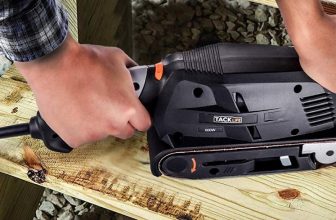Lawnmowers are fantastic machines that make the chore of cutting our job a lot easier than they ordinarily would be. However, for them to keep working effectively, the consumer needs to keep them in the proper working condition, and that means regular maintenance. A lawnmower that’s properly maintained lasts longer and works better than one that’s not properly maintained.
Unfortunately, while we all may know that we need to keep our lawnmowers in good condition to keep them running and running efficiently, not everyone is sure about what they need to do to keep their mower in good shape. That’s why we’ve decided to go over some of the things that the consumer needs to do to ensure that their most important piece of lawn equipment remains in the best condition for as long as possible.
Step One: Read The Owner’s Manual For The Lawnmower
The first step to keeping a lawn mower in good condition is for the consumer to familiarize themselves with the owner’s manual to the lawnmower. Inside of this manual is everything a lawnmower’s owner needs to keep their machine in perfect running order. It tells them how often to change filters, when to change oil, and what types of spark plugs the lawnmower needs. Therefore, it seems like a good idea for everyone to familiarize themselves with this manual.
Step Two: Make Sure That The Undercarriage Is Free Of Grass
It’s also a good idea to make sure that the undercarriage of the mower is regularly cleaned out. Grass can become caked on the bottom of the mower and interfere with the turning of the blade, and if left where it’s at, it can lead to corrosion. Use a wire brush to remove this debris after every mowing.
Step Three: Make Sure That The Mower Has Fresh Oil & Gas
The next step to ensuring that your mower is ready for work is to make sure that it has fresh oil and gas in it. The proper type of oil should be used, as stated in the owner’s manual, and it should be up to the fill line of the oil’s dipstick. Always make sure to use gasoline in your mower that isn’t older than a few months old, or use gasoline that’s been properly stabilized with a fuel stabilizer.
Step Four: Make Sure The Air Filter Is Clean
It’s also a good idea to make sure that the air filter is completely clean. A dirty or clogged air filter adds more stress to the mower’s engine—and this can result in lower fuel efficiency and even shorten the lifespan of the engine. Most of the mower sold today have either a foam or paper filter that can either be cleaned or replaced as needed. Replacing the filter annually can ensure that the mower runs at its best.
Step Five: Make Sure That The Blades Are Sharp
It’s also important to make sure to keep the blades sharpened. It’s generally recommended that the blades are sharpened yearly to keep them in grass-cutting form. Although the consumer can use a vice and file to sharpen their blades, they shouldn’t do so if they’re inexperienced or have never done it before. In those instances, it’s best to have the blades sharpened by a professional lawn mower repair shop at the end, or the beginning of the mowing season.
Step Six: Winterize The Mower At The End Of The Season
The final step to keeping the mower in the best condition possible is to make sure it’s winterized at the end of every season. Properly winterizing the mower takes less than an hour but it can pay huge dividends for the consumer in longer mower life and better mower fuel efficiency. In the next section, we’ll examine how to properly winterize a lawnmower at the end of the mowing season.

How To Winterize A Lawnmower
As promised, this section deals with how to winterize a lawnmower for the winter months. The following steps are easy to do but will keep the mower in good condition and ready for the spring mower season once it starts again.
Step One: Change The Oil
Old oil contains chemicals, metal shavings, and acids that can corrode a mower’s parts, so it’s important to replace the oil with new oil before storing it for the winter. Remove the old oil using an oil removal kit and put the right oil into it. Make sure to run the motor for a few moments to ensure that all parts are coated, and then proceed to step two.
Step Two: Deal With The Gas
The next thing to consider is gasoline, and this is the part of this guide that’s sure to be controversial. Some guides recommend draining the fuel completely, and others suggest using a fuel stabilizer in the fuel before topping it off. Which way is the best way to deal with the gasoline? Well, in our opinion, it all depends.
Some lawnmower manufacturers recommend draining the fuel completely out of their mowers, and others recommend using a fuel stabilizer in the gas tank instead. Since the lawnmower manufacturer knows more about their engines than just about anyone, it’s probably best to just follow their suggestion as to whether or not to drain the gas tank.
Step Three: Replace The Spark Plug & Air Filter
Now’s a good time to replace the spark plug and the air filter for the mower since you’re already working on the mower. This will ensure that the mower is ready to go as soon as the mowing season begins.
Step Four: Do A Final Inspection
Finally, the last thing that the consumer is going to want to do before they put the mower away from the year is to do a final inspection. Make sure to look over the nuts and bolts on the mower for any that may have become loose. This is also a good time to inspect the chassis of the mower for any damage that may need to be addressed.





